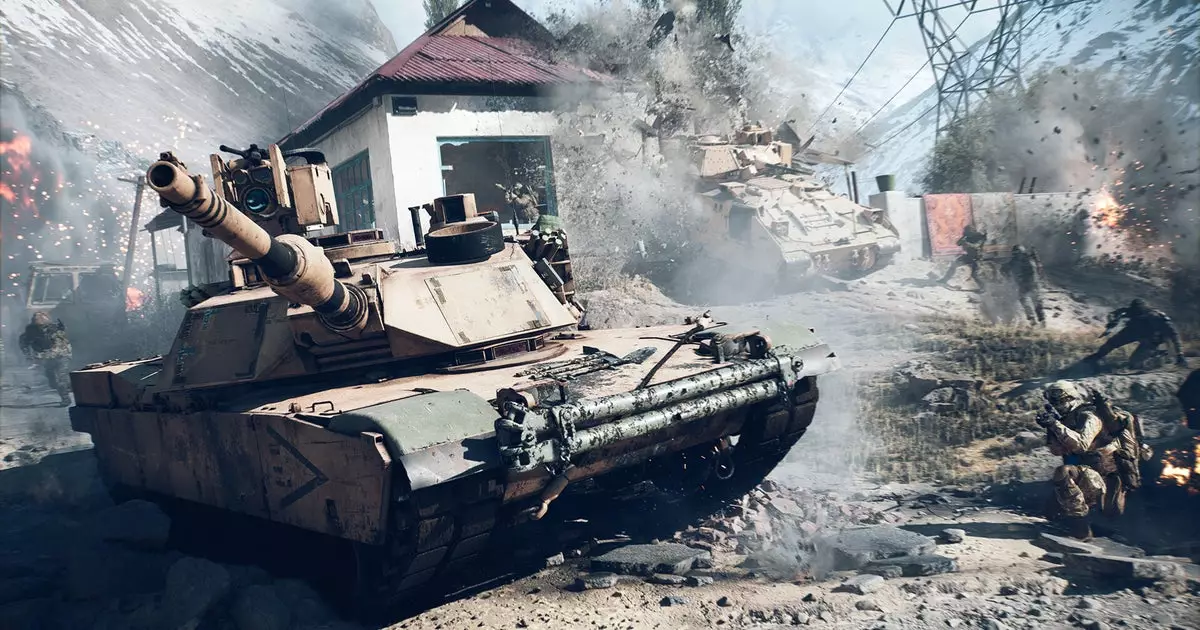One of the most fascinating aspects of modern multiplayer shooters like Battlefield 6 is the perception of control versus chaos. Veteran or seasoned players often navigate maps with a kind of ballet-like precision, frosted with moments of deft agility. Meanwhile, newcomers or less skilled gamers might find themselves flailing behind the wheel of vehicles that handle like fragile paper mâché. This dichotomy is not simply a matter of innate skill but a byproduct of intentional design choices. Developers, consciously or subconsciously, craft the game’s core mechanics so that mastery feels like a matter of perseverance and adaptation rather than raw talent alone.
The disparity in vehicle responsiveness raises critical questions about game design principles. Should everything be finely tuned to reward skill, or is there value in creating a landscape where the experience fluctuates based on other factors? Battlefield’s vehicle physics seem to lean toward the latter—deliberately or not—making each victory or failure a reflection of both player ingenuity and the underlying framework set by the developers.
This leads to the uncomfortable realization that perhaps players are subjected to a carefully curated experience that is part skill, part unpredictability—a tension well-known among game designers. The “candy floss” handling of vehicles for some, contrasted with the agile grace of others, might not just be a reflection of player skill but a symptom of deeper balancing decisions that aim to shape gameplay over time.
Balancing as a Moving Target
A revealing insight from Battlefield 6 lead producer David Sirland is that vehicle durability and effectiveness are intentionally being kept on the weaker side in initial game versions. His remark that they preferred to start with vehicles that felt “too weak” rather than “too powerful” exemplifies an approach rooted in cautious experimentation. It’s a recognition that the pursuit of perfect balance is a moving target—one that demands constant iteration, refinement, and readjustment in response to player behaviors.
This methodological undercurrent hints at a broader philosophy: developers are not solely responding to current gameplay states but are actively trying to forecast how the game’s ecosystem will evolve. They understand that players will become more adept at exploiting mechanics and countering vehicle threats. Therefore, releasing a slightly underpowered vehicle set might serve as a baseline, giving the team room to scale up power levels—or tweak physics—based on real-time feedback and emergent strategies.
The challenge, of course, lies in creating a dynamic environment where weapons, vehicles, and players’ tactics co-evolve. Developers must accept that perfect balance is an idealistic goal, and instead focus on creating a flexible framework that can adapt. This recognition shifts the role of game balancing from static endpoints to an ongoing, iterative process—an unending act of tuning that shapes the game’s identity over its lifespan.
The Psychological and Strategic Layers of Balance
The game’s design decisions also have profound psychological implications. For example, exaggerated vehicle destruction in trailers creates anticipation of chaos and destruction—yet in practice, those same vehicles might be fragile enough to be taken out with relative ease, especially by engineers wielding anti-tank weaponry. This contrast influences player expectations and strategic choices. Newcomers might feel overpowered or underwhelmed, while seasoned veterans quickly adapt tactics to exploit perceived weaknesses, thus fueling an ongoing evolutionary arms race.
Furthermore, balancing isn’t merely about numbers; it’s also about how players interpret and respond to these systems. A vehicle that feels underpowered may inadvertently encourage ingenious tactics that offset its deficiencies, fostering creativity rather than frustration. Conversely, overly powerful vehicles risk diminishing the importance of infantry skills, leading to imbalance and discontent.
The decision to err on the side of weaker vehicles initially appears as a calculated risk—investing in a foundation that can be incrementally strengthened rather than starting with a potentially game-breaking powerhouse. This cautious approach also demonstrates a respect for community feedback, acknowledging that initial impressions can significantly impact player retention and satisfaction.
The Future of Battlefield and the Broader Lessons in Game Design
Looking ahead, the inclusion of vehicle-focused maps in upcoming Battlefield Labs sessions indicates a continued effort to refine the delicate balance of power and resilience. Such iterative testing highlights the importance of live data collection and player interaction in shaping a final product that aligns with both fun and fairness.
Ultimately, what Battlefield 6 reveals about modern game development is that balancing is far from a one-and-done task. It’s a strategic dance that involves understanding player psychology, anticipating future exploits, and embracing a fluid process of continuous adjustment. Developers craft not just the mechanics of the game but also shape the narrative of challenge, mastery, and resilience—elements that keep players engaged long after the initial release.
In this light, the game becomes less about perfect physics or damage models and more about the ongoing conversation between developers and players—a conversation built on iterations, insights, and an unyielding pursuit of an engaging, dynamic experience.

